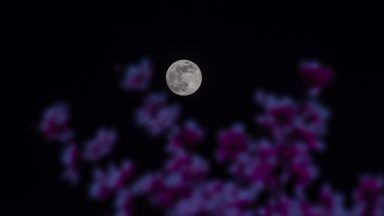
Last Supermoon of 2024: All About Beaver Moon

Tonight, stargazers across the globe will have the incredible opportunity to witness the final supermoon of 2024, aptly named the Beaver Moon. This celestial event not only captivates the eye but also holds cultural significance. To fully appreciate the beauty of this phenomenon, it’s essential to understand when it reaches its peak, the origins of its name, and other fascinating insights about the moon’s appearance. By preparing in advance, enthusiasts can enhance their viewing experience and deepen their connection to the cosmos.
Mark Your Calendars: The Peak Timing for the Last Supermoon of 2024
According to NASA, the Beaver Moon will reach its stunning peak on Friday, November 15, at 4:29 p.m. EST. To assist moon enthusiasts, the Old Farmer’s Almanac provides detailed moonrise times tailored for various ZIP codes across the United States, ensuring that everyone can catch this mesmerizing sight. This meticulous attention to timing is crucial, as the moon’s brightness and visibility can vary significantly throughout the evening, making it essential to plan ahead for the best viewing experience.
During this month’s breathtaking supermoon, the lunar body will be situated approximately 224,385 miles from Earth. This proximity is what gives the moon its larger-than-life appearance, captivating those who gaze upon it. Such closeness not only enhances its brightness but also allows for spectacular photographic opportunities for both amateur and professional photographers. The unique lighting and size during a supermoon create an enchanting spectacle that draws countless admirers into the night.
Discover the Cultural Significance Behind the Name Beaver Moon
The term Beaver Moon derives from the tradition of the Old Farmer’s Almanac and refers to the time of year when beavers are actively preparing for winter by seeking shelter in their lodges. This name resonates with nature enthusiasts and reflects the seasonal changes in wildlife behavior. Historically, Native American tribes observed the natural world closely, naming each full moon to reflect the activities and changes occurring in their environment during that month. Understanding these names provides deeper insight into our relationship with nature and the cycles of life.
In addition to the Beaver Moon, various Native American tribes recognized November’s full moon by other names, such as the Frost Moon, Freezing Moon, Digging Moon, Deer Rutting Moon, and Algonquin Whitefish Moon. Each of these names reflects the ecological and cultural significance of this lunar phase, showcasing the diverse ways in which different communities interpret and celebrate the changing seasons. This rich tapestry of meanings highlights the importance of the moon in both cultural storytelling and natural observation.
Explore the Series: Previous Supermoons of 2024
The Beaver Moon is the final event in a rare sequence of four consecutive supermoons throughout 2024. The first of these was a remarkable Supermoon Blue Moon, known as the Sturgeon Moon, which occurred in August. Following this, September brought the Super Harvest Moon, which was particularly noteworthy as it also featured a partial lunar eclipse. In October, skywatchers were treated to the Super Hunter’s Moon, which stood out as the closest full supermoon of the year. This series of events has offered a rare opportunity to observe the moon at its most impressive and has heightened interest in lunar phenomena among enthusiasts and casual observers alike.
Looking Ahead: First Supermoon of 2025
As we turn our gaze to the future, 2025 promises to be another exciting year for lunar enthusiasts with three scheduled supermoons. The first will illuminate the night sky on October 7, followed by another dazzling display on November 5. Finally, the year will conclude with a final supermoon on December 4. Marking these dates on your calendar will ensure you don’t miss out on these spectacular celestial events, as each supermoon brings its unique allure and beauty, captivating audiences worldwide.
Expert Tips for Maximizing Your Supermoon Viewing Experience
- Timing is Key: The supermoon appears most impressive during moonrise or moonset when it’s closer to the horizon. This positioning enhances its visual impact and creates a stunning backdrop against the landscape.
- Escape Light Pollution: For an enhanced viewing experience, consider venturing outside city limits to avoid interference from artificial lighting. Darker skies will allow you to fully appreciate the moon’s brilliance and the surrounding stars.
- No Special Equipment Needed: The supermoon is visible to the naked eye, making it accessible to everyone. However, using binoculars or a telescope can provide a more detailed view, revealing the moon’s craters and other fascinating features.
- Frame the View: When the moon is low on the horizon and framed by natural landmarks, an optical illusion occurs, making it appear even larger and more striking. This technique can enhance your photography and viewing experience, creating memorable moments.




